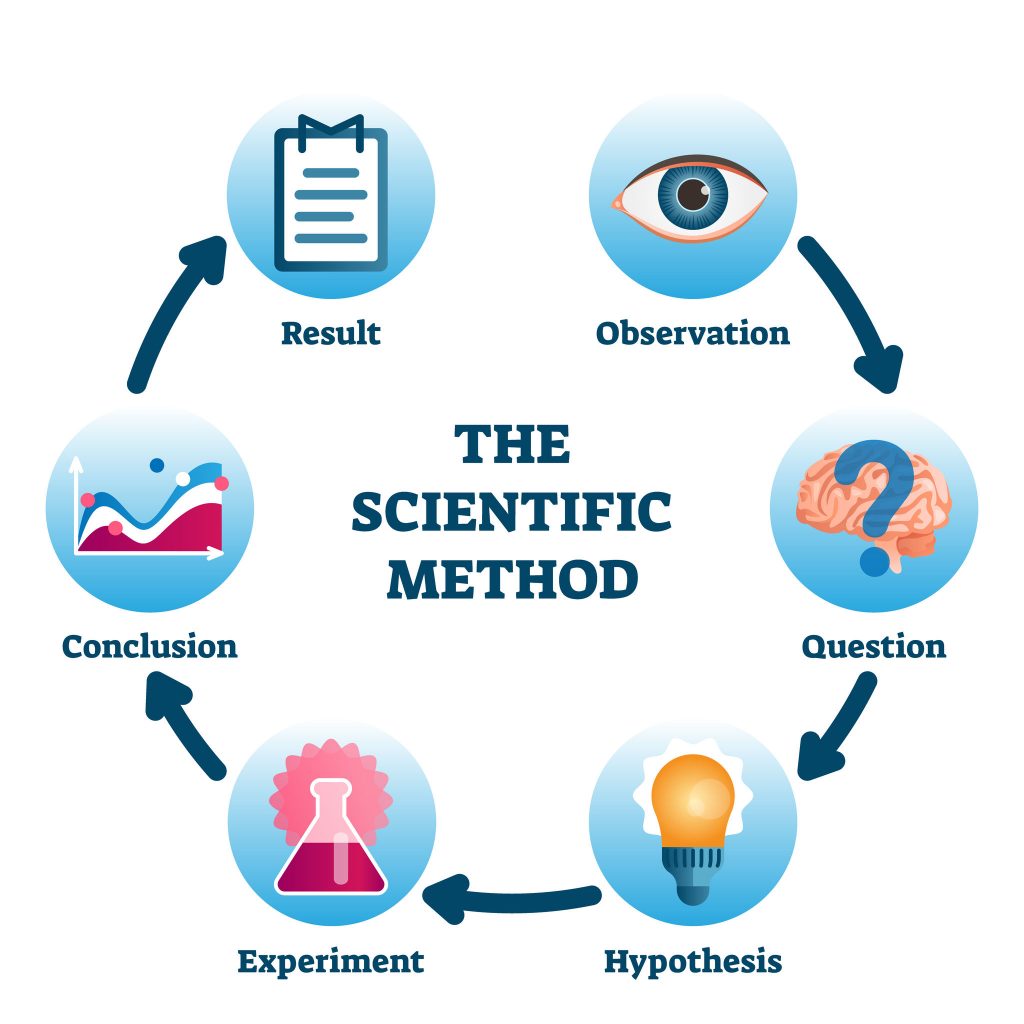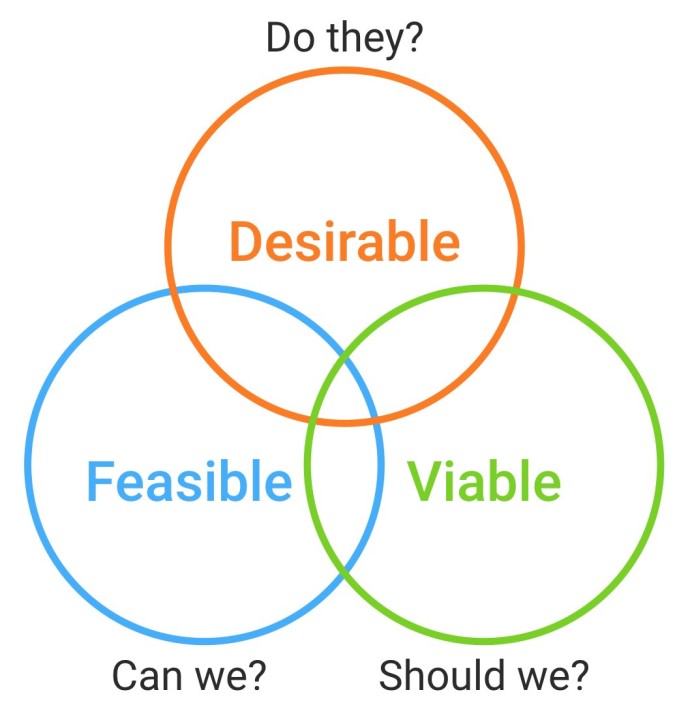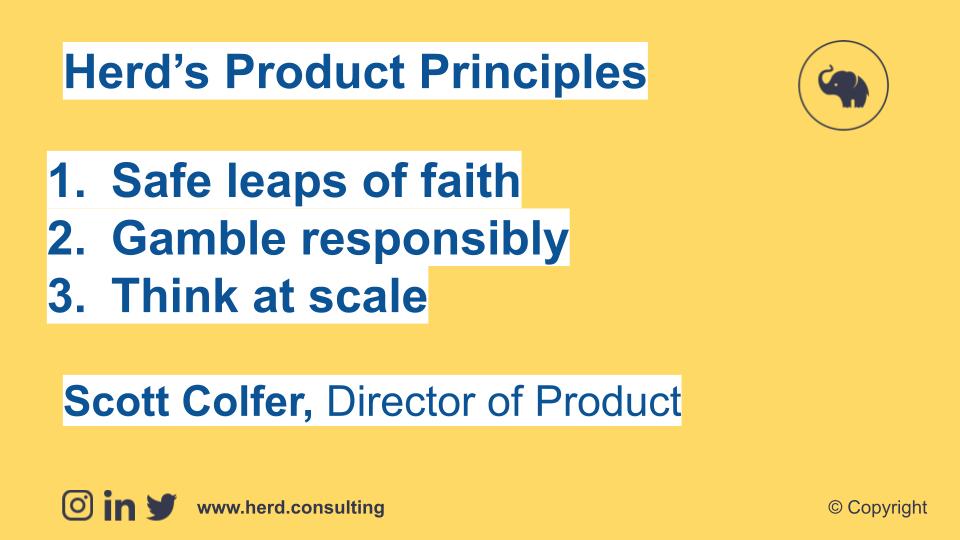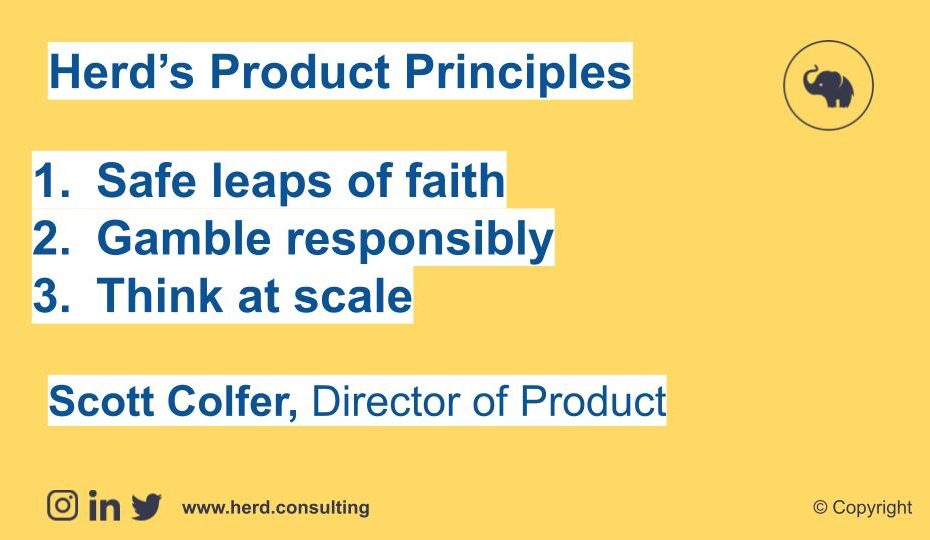Herd has created three product principles that provide a pragmatic foundation for your organisation to become product-centric. They’ve been created by Scott Colfer, our Director of Product. Scott has been a product leader for almost a decade and founded the Product Leaders Community.
Wednesday 22nd May of 2024 saw the Cabinet Office facilitating a bunch of us product leaders improving the UK Government’s product manager role description. A big theme of the day went something like this:
‘It’s policy for Digital Departments digital to be ‘product-centric’ but this term’s not explained. The only Government product thinking we can find is the product manager role description. The role description is a specialist, technical document intended for use by technical specialists. But it’s being shared with colleagues as the blueprint for being product-centric. We need something that talks about the principles of being product-centric in plain language, in a way that can support pragmatic and incremental change.’
In my head, I imagine that what we have in the product manager on the Digital, Data and Technology capability framework is like a Haynes manual for people who already understand product management. And that’s useful. We also need to tell the story of ‘product-centricity’ in human terms using inclusive language. Bonus points if it avoids saying ‘product-centric’ more than once 🙂
I’ve heard this theme a lot, for years, across Central Government, Local Government, Higher Education, Healthcare, and Charity digital work. So here’s a story of why we need something more inclusive than a role description. And a rough first draft of some principles to help bring ‘product-centricity’ to life.
Keep it simple
Now, let’s zoom back in time to 2018. I’m in front of 10-20 people giving a talk on ‘product-thinking’. And I’m getting it wrong.
I’ve been invited to speak at my local council. They don’t have a product management profession but they’ve been using my product handbook and asked me to share my experience of introducing product to the public sector. I’m sharing product management tools and techniques but this organisation is at least 3-years away from having truly product-shaped things or needing product manager-shaped people. What I’m serving is a professional development talk for product managers. What they’re hungry for is high-level principles for ‘product-thinking’ that can be applied anywhere in the organisation right now, as a first step towards product and product people. In hindsight, what I needed to do the hard work to make things simple.
Head of Product (without products)
In 2022 I regularly had conversations with peers along the lines of, ‘I’m Head of Product but we don’t have any products yet, what do I do?’
Organisations deciding to become ‘product-led’ are (often) at least 3-years away from having genuinely product-shaped things. And at least 3-years way from needing genuinely product manager-shaped people. Someone has to go in and prepare the ground. Product frameworks and tools are inadequate for organisations at this point, because those frameworks and tools largely assume that people are ready to use them. What’s needed is a Product Leader, skilled at change and transformation, to define and introduce pragmatic, foundational product principles that are immediately useful and applicable to contexts like:
- Programmes already in flight
- Workplace technology reimagining itself as employee experiences
- Platforms pushing themselves beyond the limits of Technology and Architecture
- Central Portfolio Management Office looking to coordinate prioritisation and benefits.
Frameworks, used in a cookie-cutter way, are totally inadequate at this point. Simple, context-specific principles are essential. Heads of Product without Products sit in this space of change and transformation, getting things ready.
The backgrounds of product leaders suited to these spaces is interesting. I did a review a few years back and the most common backgrounds were science and marketing. This may sound surprising at first but makes sense on second thought. A scientific approach is about taking safe leaps of faith. And marketing is about aligning people around clear benefits and a clear story.
I’ve distilled some foundational product principles from everything I’ve experienced as a product person and leader. They’re not theoretical or aspirational, they simply give a name to what I’ve seen. They describe what we, product people, end up doing when we’re introduced to an organisation that’s new to product.
Product principles
1. Create safe leaps of faith
Teams are under-confident or over-confident when it comes to making decisions.
Either way, we end up improving our decisions by taking a scientific approach that allows for safe leaps of faith:
- Make an observation/ask a question
- Research the topic or area
- Create a hypothesis
- Run an experiment and test the hypothesis
- Analyse data from the experiment
- Conclude what you’ve learned from the experiment

For an under-confident team, this approach reverses paralysis and allows decisions to flow once more by making the stakes lower.
For an over-confident team, this approach introduces a review as soon as possible so we can see if expectations match reality.
Every team has bias. And so every decision has bias. Product people tend to spot the biggest bias at any given time and try to reduce or remove it. And do this continually, forever 🙂
2. Gamble responsibly
The word ‘budget’ gives a false sense of security. It says ‘we’re definitely going to do this thing, this thing will definitely be successful, and here’s the money we need’. ‘Budget-thinking’ turns off our critical faculties. We worry about how to spend money instead of asking if we should spend money.
Product people often bring a different perspective, viewing every decision as a bet. Every decision and expenditure is an investment in an opportunity that may or may not turn out to be desirable, viable, and feasible. That’s totally OK. In fact, that’s reality.
Switching from ‘budgets’ to ‘investment’ and acknowledging that everything is a gamble is healthy and helps us to keep on our toes. If we gamble everything on a single opportunity with a budget to deliver a solution that’s already been decided (which I see a lot in Discovery) it’s like walking into a casino and putting everything on a single number in the Casino and hoping for the best. If we spread our bets and and only bet what we can afford to lose then we’re more likely to see a return on investment.
3. Think at scale
Product people will seek the sweet spot where the perspectives of others align, because this is where we find value. Yes, part of the role is about finding bias in a team’s blindspot. But a bigger part of the role is finding value in the team’s sweet-spot. We seek the unmet need that users most want help with, that we are most uniquely placed to help with, and that we can actually get done with the time, people, stuff, and money available to us.

These questions – does anyone want it, should we do it, can we do it? – are at the heart of scaling our products. Most perspectives in our teams answer one of those questions, if we’re lucky. We align all perspectives so we can answer them all. As we get more senior and become product leaders we get to see across entire portfolios of work and see which products could serve an entire organisation, not just enhance a bit of one service. This is the heart of what being product-centric is. It’s not just about hiring product managers. It’s about understanding the most urgent, pervasive, common, and valuable unmet needs and solving them once, for everyone.
Pragmatic foundation
So there we go, some product principles in plain language to help us tell the story of product.
I’m certain they’re wrong. And I’m confident they’re still valuable because they improve on what we have.
The challenge I set at the beginning was to tell a story. We’re not at the level of Tom Hardy telling a Cbeebies bedtime story, but we’ll get there.
So please treat them as a useful starting point.
- Create safe leaps of faith
- Gamble responsibly
- Think at scale
We’re already using these principles here at Herd and they’re helping make strategic change beyond normal Digital boundaries. Get in touch if you’re interested in working together in 2024. https://herd.consulting/product-delivery

Afterword: Compliment over Compete
Lots of ‘digital’ principles already exist. They codify the perspective of specialisms like Data, Delivery, Design, and Technology. We’re not looking to compete with them or undermine them. We’re looking to compliment them. Examples of existing principles:
